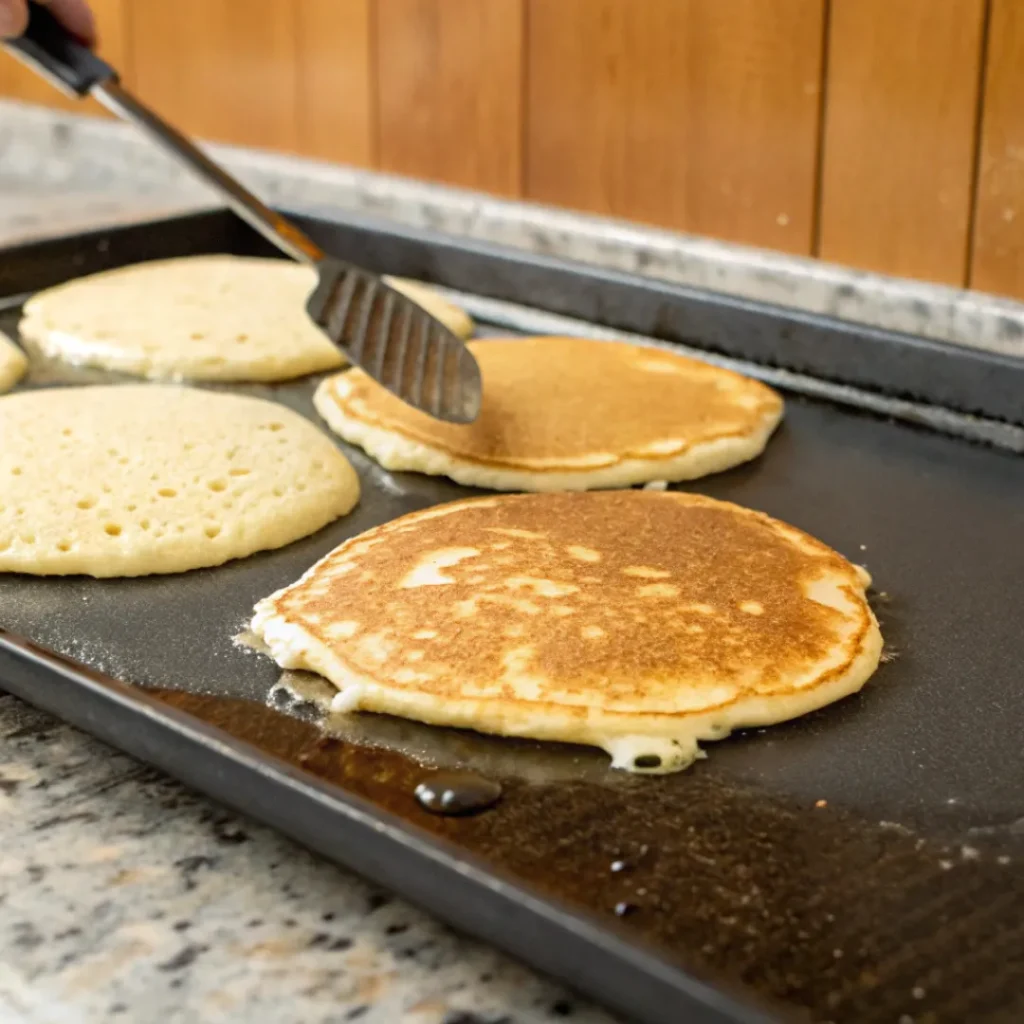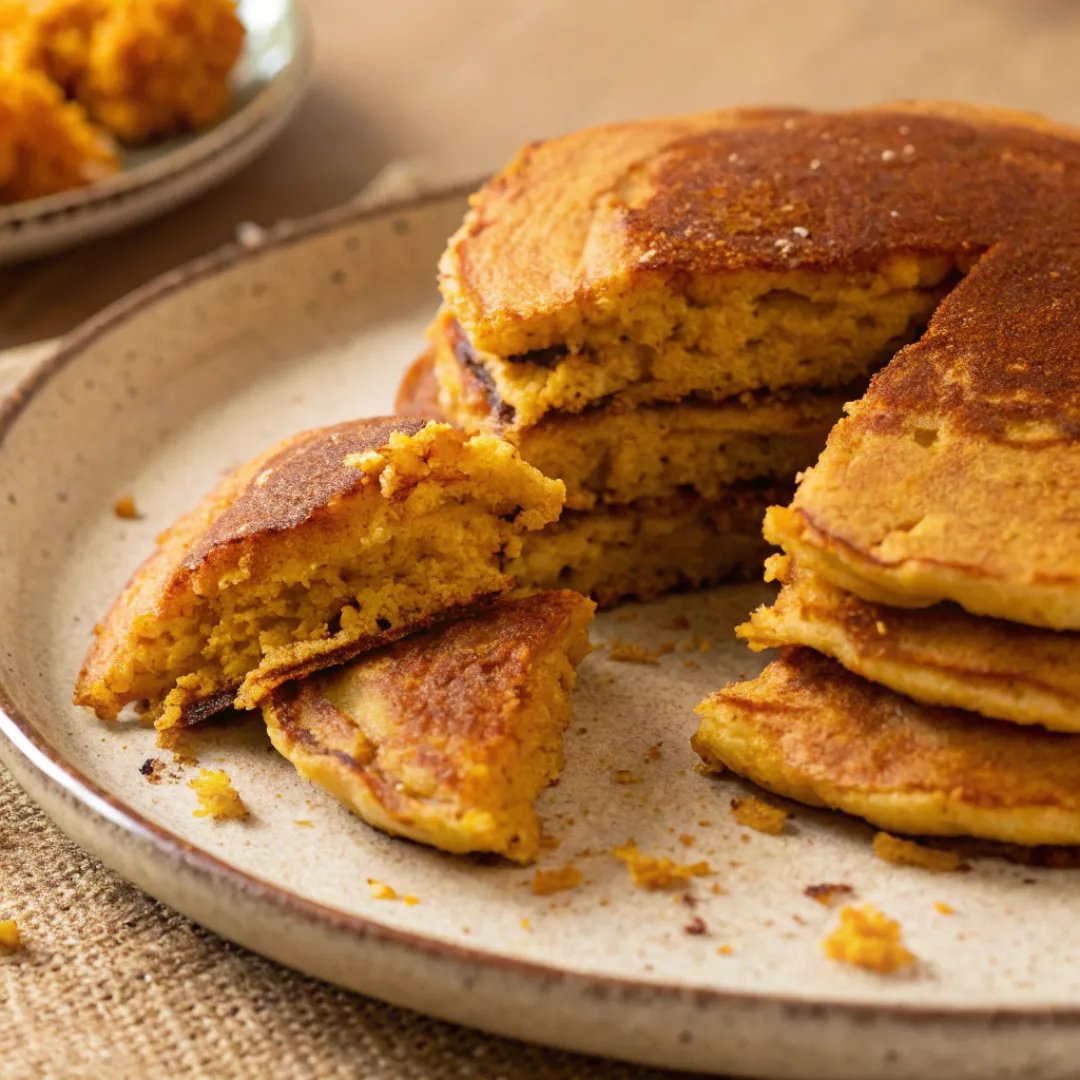Sweet potato pancakes are a delicious, nutrient-rich breakfast that many enjoy for their natural sweetness and soft texture. However, if you’ve ever tried making them and found that they fall apart, you’re not alone. Pancakes can crumble, break, or fail to hold their shape due to several common issues, from ingredient ratios to cooking methods. So, why do my sweet potato pancakes fall apart?
In this article, we’ll explore the possible reasons behind this issue, as well as practical solutions to ensure your sweet potato pancakes turn out perfectly fluffy and intact. We’ll also share essential tips on ingredients, techniques, and recipe adjustments to help you make pancakes that are easy to flip, firm, and delicious.
Common Reasons Why Sweet Potato Pancakes Fall Apart
Several common mistakes can cause sweet potato pancakes to fall apart. Here are some of the most frequent reasons:
Incorrect Ingredient Ratios
Pancakes need a balance of dry and wet ingredients to hold their shape. Too much liquid, especially from the mashed sweet potato, can make the batter too runny, resulting in fragile pancakes that fall apart.
Lack of Binding Agents
Ingredients like eggs play a crucial role in binding the batter. Without enough binding agents, the pancakes won’t have the structure they need to hold together.
Improper Cooking Techniques
Cooking pancakes at the wrong temperature or flipping them too early can lead to breakage. It’s essential to set the correct skillet temperature and wait until bubbles form on the surface before flipping.
How Ingredients Affect Pancake Structure
Each ingredient in sweet potato pancakes contributes to texture and structure. Here’s how key ingredients impact stability:
The Role of Flour
Flour provides structure and helps the pancakes hold together. If you use too little flour, the pancakes may be too delicate and fall apart. While all-purpose flour is a common choice, you can also try whole wheat flour or gluten-free flour blends for added stability.
Importance of Eggs and Other Binders
Eggs act as a binding agent, helping to hold the batter together. They also contribute to the fluffiness of pancakes. For vegan recipes, you can use alternatives like flax eggs or chia eggs (1 tablespoon ground flaxseed or chia seeds mixed with 3 tablespoons water) to help bind the ingredients.
Choosing the Right Sweet Potato Consistency
Sweet potatoes are naturally moist, so too much moisture can make the batter too loose. For best results, roast or boil sweet potatoes until tender, then mash or puree until smooth. If the mashed sweet potatoes seem watery, pat them with a paper towel to remove excess moisture before adding them to the batter.

Batter Consistency and Why It Matters
The consistency of the batter plays a significant role in how well the pancakes hold together. Here’s what to look for and how to adjust if needed:
Signs of an Ideal Batter Consistency
The batter should be thick enough to hold its shape when poured but still pourable. If it’s too runny, it will spread too thinly and break apart. On the other hand, a batter that is too thick will create dense, tough pancakes.
How to Adjust the Batter
- If Too Thin: Add a tablespoon of flour at a time until you reach the right consistency.
- If Too Thick: Add a splash of milk or water, stirring gently to avoid overmixing.
Cooking Techniques for Stable Pancakes
The way you cook your pancakes has a big impact on whether they hold together. Here are some essential tips:
Setting the Right Skillet Temperature
Cooking pancakes over medium heat is ideal. A too-hot skillet will cook the outside too quickly, leaving the inside undercooked, which can cause breakage. Test the skillet by sprinkling a few drops of water; if they sizzle, it’s ready.
When and How to Flip Pancakes
Flip pancakes only once bubbles form on the surface and the edges start to look set. Use a thin, flexible spatula to gently lift and flip each pancake. If the pancakes are breaking, let them cook a bit longer before flipping.

For more tips on achieving the perfect pancake texture and avoiding common mistakes, check out this guide from The Spruce Eats: Tips for Making Perfect Pancakes.
Recipe Adjustments for Gluten-Free and Vegan Options
If you’re making gluten-free or vegan sweet potato pancakes, you may need to adjust ingredients to ensure they hold together:
Binding Alternatives for Gluten-Free Pancakes
Gluten-free flours often lack the natural elasticity of wheat flour, so adding a binding agent like xanthan gum (¼ teaspoon per cup of flour) or a tablespoon of cornstarch can help improve stability.
Egg Substitutes for Vegan Sweet Potato Pancakes
For vegan pancakes, a flax or chia egg (1 tablespoon ground flax or chia seeds mixed with 3 tablespoons water) works as a good egg replacement. Applesauce or mashed banana can also work, adding moisture and a touch of sweetness.
Additional Tips for Perfect Sweet Potato Pancakes
Here are a few more tips to help you achieve pancakes that are both delicious and structurally sound:
- Use Non-Stick Cookware: A non-stick skillet or griddle not only prevents sticking but also ensures even cooking and browning. Grease the pan lightly with butter or oil, but don’t overdo it—a thin layer is sufficient for non-stick cookware. Too much grease can cause uneven browning.
- Don’t Overmix the Batter: Overmixing can develop gluten in the flour, resulting in tougher pancakes. Instead, mix until you no longer see streaks of flour, but don’t worry about small lumps. These will cook out and add to the light, fluffy texture.
- Let the Batter Rest: Resting allows the flour to fully hydrate, resulting in a more stable batter that’s easier to work with. Five to ten minutes is ideal for this recipe, but you can go up to 30 minutes if needed. This rest time also lets baking powder or other leavening agents activate, making for fluffier pancakes.
- Cook Over Medium-Low Heat: Sweet potatoes have natural sugars that can cause pancakes to burn if the heat is too high. Medium-low heat gives the pancakes time to cook through without over-browning the outsides. Adjust your stove temperature as needed.
- Flip Carefully: Sweet potato pancakes are often softer and more delicate than traditional pancakes due to the moisture from the potatoes. Wait until bubbles appear on the surface and the edges look set before flipping. Use a wide spatula and a gentle hand to avoid breaking them.
- Keep Warm in the Oven: If making a large batch, keep pancakes warm by placing them in a 200°F (93°C) oven until all are ready. This helps retain their softness without drying them out.
- Add Flavor Variations: For extra flavor, add spices like cinnamon, nutmeg, or ginger to the batter. A teaspoon of vanilla extract or a sprinkle of chopped nuts can also enhance the taste, adding a cozy, autumnal twist.
- Following these steps will help you achieve perfect sweet potato pancakes every time—soft, flavorful, and perfectly golden!
Frequently Asked Questions
Can I use canned sweet potatoes for pancakes?
Yes, you can use canned sweet potatoes. Drain them well and mash to ensure they’re not overly watery, as extra moisture can affect pancake stability.
How do I make pancakes fluffier?
To make pancakes fluffier, add a little extra baking powder (about ½ teaspoon) and avoid overmixing. A thick, but pourable batter is ideal for fluffy pancakes.
Can I freeze leftover sweet potato pancakes?
Yes, sweet potato pancakes freeze well. Place a layer of parchment paper between each pancake, then store them in a freezer-safe bag. Reheat in a toaster or skillet.
How do I keep pancakes warm while cooking batches?
Place cooked pancakes on a baking sheet in a 200°F (90°C) oven to keep them warm without drying out.
Conclusion
If you’re wondering, “Why do my sweet potato pancakes fall apart?”, the answer likely lies in ingredient balance, cooking techniques, or batter consistency. By paying attention to the right flour-to-liquid ratio, using effective binding agents, and cooking at the correct temperature, you can ensure that your pancakes hold together beautifully.
With these troubleshooting tips and adjustments, you’ll be able to enjoy perfectly fluffy, delicious, and intact sweet potato pancakes. Whether you’re making them gluten-free, vegan, or with traditional ingredients, you can create a satisfying breakfast that’s as delicious as it is nutritious. Enjoy your pancakes with your favorite toppings, and turn every breakfast into a special occasion!

